Infrastructure
Ahmedabad's Bullet Train Station Nears Completion, Showcases Blend Of Modernity And Tradition
V Bhagya Subhashini
Apr 24, 2024, 12:37 PM | Updated 12:37 PM IST
Save & read from anywhere!
Bookmark stories for easy access on any device or the Swarajya app.
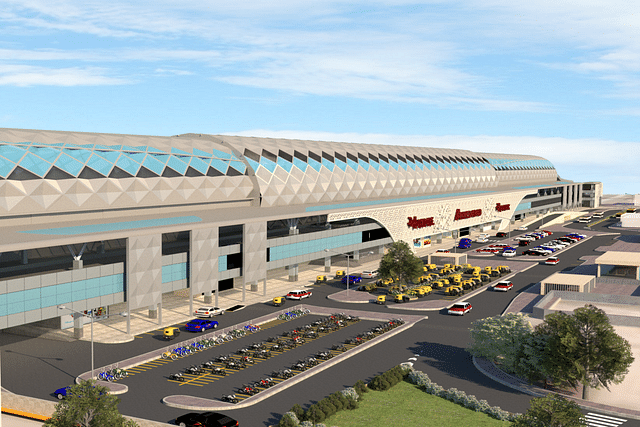
The construction of Ahmedabad's bullet train station is advancing at a rapid pace, and its design uniquely incorporates the city's rich cultural and historical heritage.
Spanning an area of approximately 38,000 square metres, the station is situated above the existing western railway station, covering platforms 10, 11 and 12.
It boasts a roof adorned with motifs of hundreds of kites and a facade inspired by the intricate lattice work of the iconic Syed Siddique’s Jaali. The station comprises two platforms and stands at a height of 33.7 metres from ground level, with the concourse and platform level slabs already completed.
To ensure seamless integration of the Ahmedabad High Speed Rail (HSR) station with other modes of rail transport, National High Speed Rail Corporation Limited (NHSRCL) has designed a user-friendly station layout for Ahmedabad.
An integrated building for passenger transit is planned on east side of the existing railway station, where passengers will be able to swiftly switch from one mode to another.
This building will be equipped with escalators and elevators and will house many passenger convenience facilities like booking office, passenger lobby, tea/coffee kiosks and other amenities.
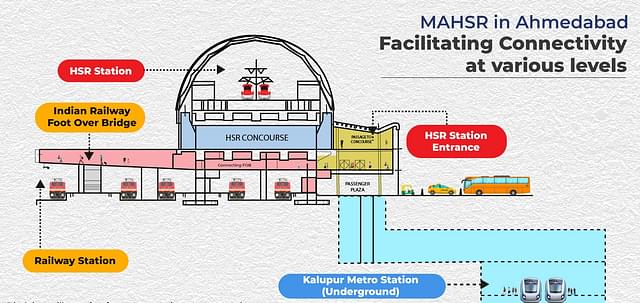
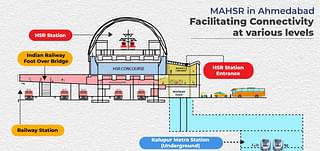
Meanwhile, the Sabarmati Terminal Station, serving as the terminal for the Mumbai-Ahmedabad High-Speed Rail (MAHSR) Corridor, draws its design inspiration from Mahatma Gandhi’s charkha at Sabarmati Ashram.
Spanning an area of about 45,094 sqm, the station features four platforms and stands at a height of 44 metres from ground level. Currently, the foundation work is complete, and the casting work for the first-floor slab is in progress.
The bullet train alignment also includes a bridge over the Sabarmati river in Ahmedabad district, Gujarat. The bridge, with a length of 480 metres and spanning a river width of 350 metres, features spans of 76 metres and 50 metres.
The piers range in height from 31 to 33.5 metres and have diameters of 6 metres and 6.5 metres. Situated between the Sabarmati and Ahmedabad bullet train stations, the bridge's foundation works are currently underway.
Additionally, the Sabarmati Rolling Stock Depot is being developed with inspiration from Shinkansen depots in Japan. As the largest of the three depots, it covers an area of approximately 83 hectares, as per Times Of India report.
The depot will house state-of-the-art equipment for both light and heavy maintenance, including inspection bays, a washing plant, workshops, sheds, and stabling lines.
Some of the largest industrial sheds will be part of the depot, and the construction is progressing well, with the OHE foundation work and RCC works for the administrative building currently underway.
India’s First Bullet Train Project
The high-speed rail operating at 320 kmph will traverse along west India’s landscape, covering a 508.17 km distance between Mumbai and Ahmedabad in just about two hours.
This will save time compared to current travel time between the two terminal stations by about nine hours (by bus) or six hours (by conventional railways).
It will cover 155.76 km in Maharashtra, 4.3 km in the Union Territory of Dadra and Nagar Haveli and 348.04 km in Gujarat, with 12 stations en route.
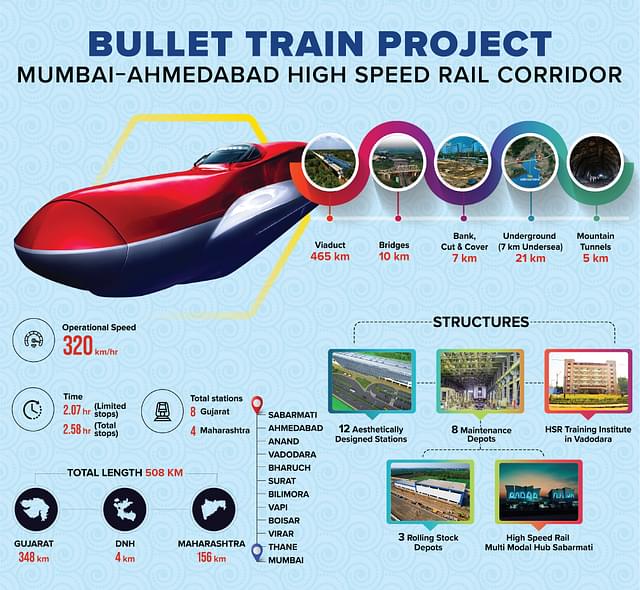
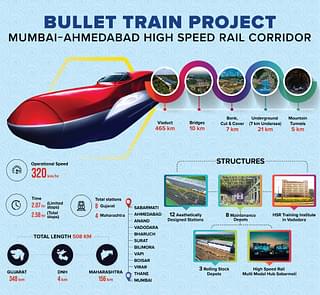
The project highlights include introduction of a slab track system for the first time in India, construction of 24 river bridges, 28 steel bridges, and seven mountain tunnels along the corridor, and the construction of a 7 km undersea tunnel.
The first section of India's first bullet train will be ready for service by 2026, according to Union Railways and IT Minister Ashwini Vaishnaw.
Save & read from anywhere!
Bookmark stories for easy access on any device or the Swarajya app.
Support Swarajya's 50 Ground Reports Project & Sponsor A Story
Every general election Swarajya does a 50 ground reports project.
Aimed only at serious readers and those who appreciate the nuances of political undercurrents, the project provides a sense of India's electoral landscape. As you know, these reports are produced after considerable investment of travel, time and effort on the ground.
This time too we've kicked off the project in style and have covered over 30 constituencies already. If you're someone who appreciates such work and have enjoyed our coverage please consider sponsoring a ground report for just Rs 2999 to Rs 19,999 - it goes a long way in helping us produce more quality reportage.
You can also back this project by becoming a subscriber for as little as Rs 999 - so do click on this links and choose a plan that suits you and back us.
Click below to contribute.





